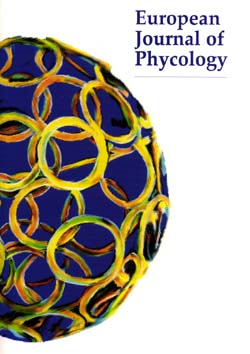Article contents
Time-lapse video observations on sexual plasmogamy in the red alga Bostrychia
Published online by Cambridge University Press: 01 February 1998
Abstract
In the red alga Bostrychia moritziana, release of spermatia is triggered by slight osmotic shock; they emerge under pressure apparently generated by swelling of the mucilaginous sheath. Spermatia adhere tenaciously to trichogynes of the carpogonium. Adhesion triggers spermatial mitosis, which is complete in about 30–45 min; there is no cytokinesis and the binucleate spermatium becomes vacuolated. The delicate, dynamic trichogyne cytoplasm contains complex membranous components and vacuoles. At the contact zone, the trichogyne and spermatial wall erode, forming a pore, and cytoplasmic continuity (plasmogamy) is achieved after about 50–70 min. Many trichogynes rupture during these events because of inadequate structural connection with the spermatia. Normally, both spermatial nuclei enter the trichogyne in sequence; rarely, both nuclei enter together. Entrance is rapid, and the nuclei often become thin and greatly elongated as each squeezes through the narrow pore into the trichogyne. Once inside, each nucleus resumes its normal shape as it starts to move steadily along the trichogyne, often with irregular pauses. One nucleus of each pair (not necessarily the first out of the spermatium) migrates along the trichogyne towards the carpogonium base to fertilize the female nucleus; the other moves in the opposite direction, away from the entry site, and it often ends up near the tip of the trichogyne. This same scenario was observed for each of several spermatia contributing nuclei to one trichogyne. Thus, our observations indicate that the two nuclei in each spermatium are differentiated so that only one is capable of fertilization, differentiation being visibly expressed in the direction that the nucleus moves as it enters the trichogyne.
- Type
- Research Article
- Information
- Copyright
- © 1998 British Phycological Society
- 27
- Cited by




